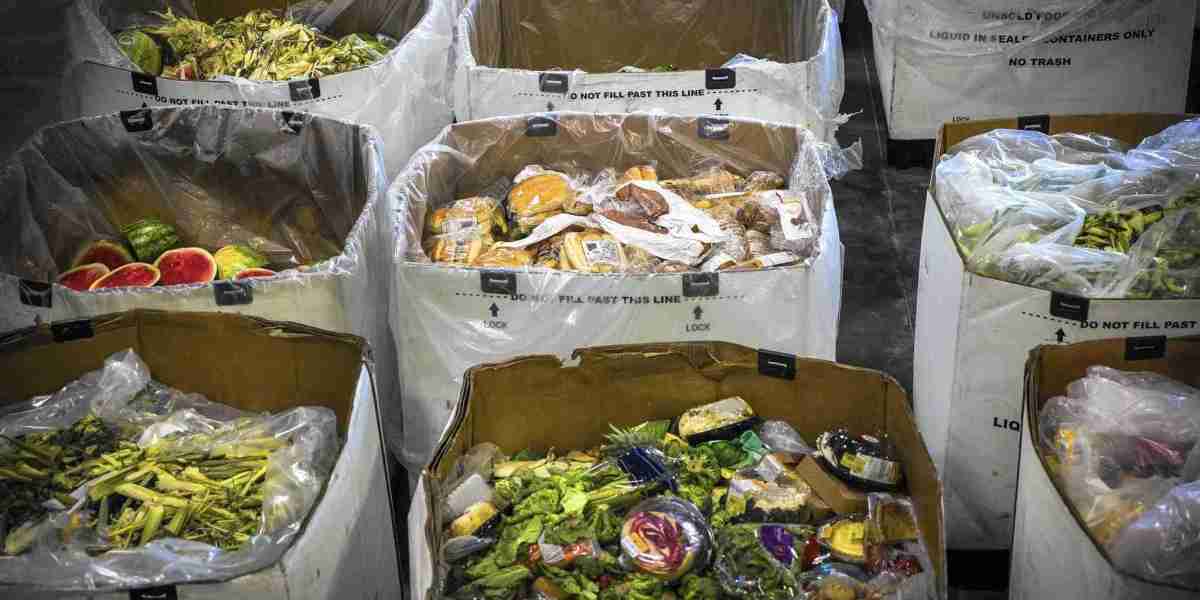Introduction
The Food Waste Recycling Machine Market is undergoing a significant transformation with the introduction of advanced recycling technologies. Among the most promising innovations are anaerobic digestion and vermicomposting systems. These emerging technologies not only help in reducing food waste volumes but also support energy recovery and soil enrichment. The integration of such systems into food waste recycling machines marks a major leap in the evolution of sustainable waste management solutions.
The Growing Food Waste Problem
Globally, food waste amounts to nearly 1.3 billion tonnes annually, as per the Food and Agriculture Organization (FAO). A large portion of this waste ends up in landfills, producing methane—a greenhouse gas far more potent than carbon dioxide. This environmental impact has forced governments, corporations, and consumers to rethink traditional disposal methods and adopt modern, eco-friendly alternatives.
Food waste recycling machines, especially those integrating anaerobic and vermicomposting technologies, offer dual benefits: reducing the volume of waste and converting it into useful byproducts such as biogas, compost, or nutrient-rich soil additives.
Anaerobic Digestion: A Clean Energy Revolution
Anaerobic digestion (AD) involves breaking down food waste in the absence of oxygen by specialized bacteria. This process produces:
Biogas: A renewable energy source primarily composed of methane, which can be used to generate electricity, heat, or even fuel.
Digestate: A nutrient-rich slurry that serves as an organic fertilizer.
Modern recycling machines equipped with compact AD modules are increasingly being adopted in urban centers, agricultural operations, and industrial facilities. These systems support circular economy models by converting waste into energy and nutrients without significant environmental impact.
Key Advantages of Anaerobic Digestion Machines:
Reduces reliance on fossil fuels.
Minimizes odor and pathogen risks compared to open composting.
Provides a scalable model—from household units to municipal-level plants.
Qualifies for carbon credits and renewable energy incentives in many countries.
Vermicomposting: Nature’s Efficient Recycling Method
Vermicomposting uses earthworms, typically Eisenia fetida (red wigglers), to convert food waste into high-quality compost known as vermicast. These worms consume organic material and excrete it as a nutrient-rich substance beneficial for soil health.
Food waste recycling machines that incorporate vermicomposting chambers are designed to:
Maintain optimal moisture, temperature, and aeration.
Separate mature compost from unprocessed material.
Minimize foul odors, making them suitable for residential and commercial use.
Benefits of Vermicomposting Machines:
Produce organic fertilizer free of synthetic chemicals.
Improve soil structure, water retention, and microbial activity.
Ideal for homes, schools, community gardens, and eco-farms.
Low maintenance and highly sustainable.
Combined Systems: Hybrid Technologies for Enhanced Efficiency
Some manufacturers are now creating hybrid machines that combine anaerobic digestion and vermicomposting. These systems are engineered to:
Start waste processing via anaerobic digestion for biogas generation.
Transfer the digested waste to vermicomposting chambers for final composting.
Maximize waste conversion efficiency and output value.
These hybrid systems offer a multi-benefit approach: generating renewable energy while producing organic fertilizer, making them ideal for eco-conscious institutions and green communities.
Market Drivers Supporting Technological Integration
1. Government Regulations and Incentives
Countries are enforcing mandates for organic waste segregation and treatment. AD systems qualify for green energy subsidies in the EU, U.S., and parts of Asia.
2. Corporate Sustainability Goals
Food producers, hospitality chains, and retail stores are investing in AD and vermicomposting equipment to align with ESG (Environmental, Social, and Governance) objectives.
3. Increased Consumer Awareness
People are more conscious about waste impact, leading to a surge in demand for home-based composting and recycling machines.
4. Technological Advancements
Smart sensors, IoT integration, and mobile monitoring are enhancing machine performance, making food waste recycling more user-friendly and data-driven.
Regional Trends in Adoption
Europe: Leading the charge with strict landfill bans and subsidies for anaerobic digestion technology.
North America: Rapid adoption among farms and food processors, with a growing interest in residential composting systems.
Asia-Pacific: Emerging economies like India and China are investing in decentralized food waste solutions due to urban population density and mounting environmental challenges.
Middle East & Africa: Pilot projects focusing on biogas generation and soil enrichment in arid, agriculture-dependent regions.
Challenges Hindering Market Growth
Despite the promise, the integration of AD and vermicomposting into food waste machines faces challenges:
Cost Barriers: High initial investment for machines with anaerobic digestion modules can deter small users.
Operational Complexity: These technologies require careful monitoring of conditions like pH, temperature, and moisture.
Limited Awareness: Many potential users remain unaware of the availability and advantages of such technologies.
However, ongoing R&D and government-supported training initiatives are steadily resolving these hurdles.
Future Outlook
The future of the Food Waste Recycling Machine Market lies in intelligent, efficient, and environmentally friendly solutions. Anaerobic digestion and vermicomposting represent a powerful shift toward machines that do more than just reduce waste—they create value from it.
As machine designs become more compact, user-friendly, and affordable, we can expect a broader adoption of these technologies across households, commercial kitchens, and institutions. The integration of AI for system optimization and predictive maintenance will further push these machines into mainstream usage.
Conclusion
Emerging technologies like anaerobic digestion and vermicomposting are reshaping the Food Waste Recycling Machine Market. These innovations provide effective, sustainable, and scalable methods for turning food waste into energy and soil-enriching materials. As awareness and regulation grow in tandem, the demand for such advanced systems will only increase, driving global market expansion and environmental benefits.




